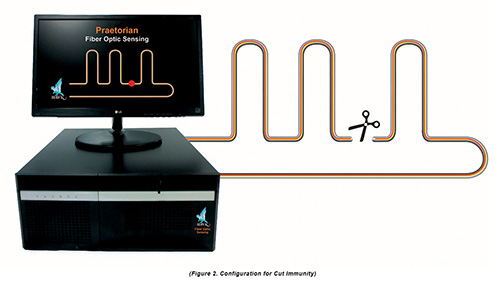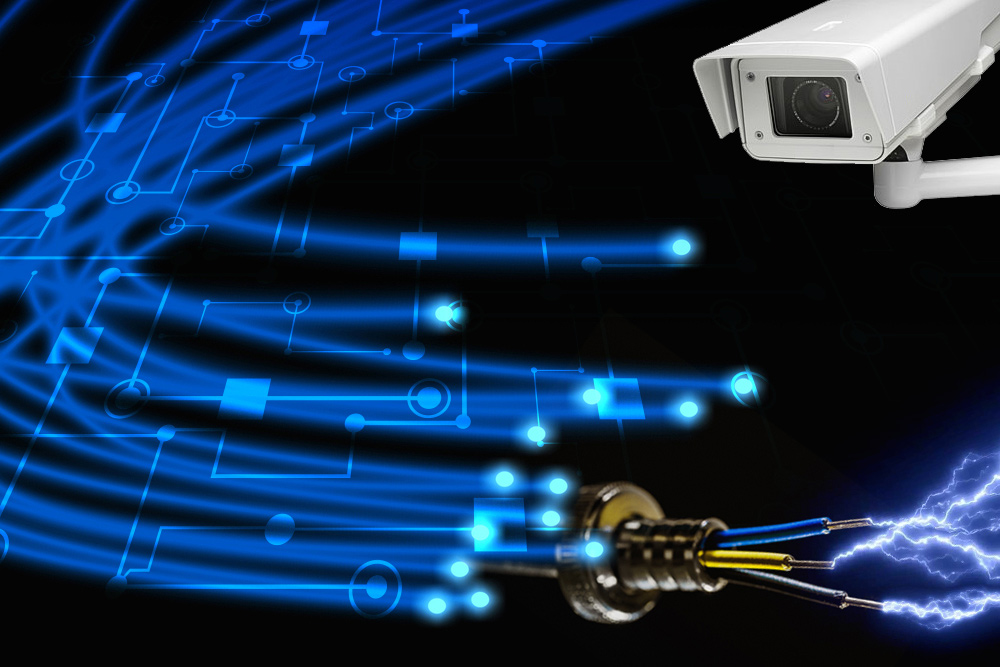Why Fiber Optic Safety Solutions Are the Future of Protection
The transition to fiber optic safety systems notes a significant innovation in the realm of security, driven by their remarkable data transmission abilities and resilience to external disturbances. These systems not only promote faster and extra reliable communication but also provide an affordable remedy with decreased maintenance needs. As the landscape of security evolves alongside emerging innovations such as AI and IoT, the potential for optical fiber to improve and redefine safety and security facilities ends up being progressively evident. Nonetheless, the ramifications of these developments increase important inquiries about the future of security actions and their effectiveness in an ever-changing atmosphere.
Advantages of Fiber Optic Equipments
Among the key benefits of fiber optic systems is their premium data transfer ability, which promotes the transmission of big volumes of information over long distances without considerable loss. This particular is especially beneficial for protection applications that call for the continuous monitoring and transfer of high-definition video feeds, sensor data, and various other critical information. Fiber optics can fit the growing needs of contemporary protection systems, making certain that information continues to be intact and reliable.
Furthermore, fiber optic cable televisions are much less at risk to electro-magnetic disturbance, which can be a significant issue in atmospheres with various electronic devices. This resistance improves the stability of the information being sent, thus minimizing the danger of data breaches or system failures. In addition, fiber optic systems are inherently more safe and secure than typical copper cables, as using a fiber optic line without detection is extremely hard.
The longevity of fiber optic wires additionally adds to their charm. They are immune to ecological factors such as dampness and temperature level variations, minimizing upkeep costs and raising system durability. Overall, these advantages placement fiber optic systems as a robust and reliable selection for contemporary safety infrastructures, ensuring reputable and secure data transmission.
Improved Information Transmission Rate

The capacity to send substantial amounts of data promptly assists in the seamless integration of high-definition video feeds and advanced analytics. Safety systems can now refine and evaluate details in real-time, improving reaction times and situational understanding. In addition, fiber optic links support longer transmission distances without deterioration of signal quality, making them excellent for extensive security networks.
The increased rate of fiber optic systems not only improves the effectiveness of security procedures but likewise lowers latency. This is particularly vital in crucial situations where prompt decision-making can stop security breaches or reduce prospective dangers. As companies continue to prioritize safety and security and efficiency, the need for fast and reputable information transmission will most certainly solidify fiber optic systems as a cornerstone of modern safety framework.
Resistance to Interference
Fiber optic security systems regularly show extraordinary resistance to electro-magnetic disturbance, a critical advantage in environments susceptible to electronic sound. Unlike traditional copper cables, which can be negatively influenced by electro-magnetic areas, superhigh frequency interference, and various other kinds of electric disturbance, fiber optic moved here wires use light to transfer data. This fundamental residential or commercial property makes sure that the signals stay clear and unchanged, no matter bordering electronic task.
Making use of glass or plastic fibers in fiber optic innovation develops a barrier against disturbance, allowing for dependable information transmission also in difficult situations such as commercial facilities, city areas with high digital traffic, or places near radio towers. This characteristic dramatically decreases the likelihood of signal degradation or loss, making fiber optic systems particularly suitable for safety applications where stability and accuracy of data are critical.
Moreover, this resistance to disturbance enhances the overall performance and integrity of safety systems, ensuring that surveillance and alert systems operate effortlessly. In a world where safety and security is increasingly endangered by sophisticated innovations, the strength of fiber optic systems sticks out as a pivotal feature, enhancing their condition as an essential part of contemporary safety and security infrastructure.
Cost-Effectiveness Over Time
Considerable expense financial savings can be accomplished with time with the application of fiber optic safety systems. While the first investment may appear higher contrasted to typical copper-based systems, the long-lasting monetary benefits become obvious via lowered operational and maintenance prices (fiber security). Fiber optic cables are inherently a lot more sturdy and much less susceptible to environmental aspects, which converts to lower substitute and repair expenditures over their lifespan
Furthermore, fiber optic systems call for less power to run, which further reduces energy expenses. Boosted data transmission abilities enable fewer repeaters and amplifiers, minimizing equipment investment and enhancing installment procedures. The scalability of these systems likewise adds to cost-effectiveness, as organizations can Visit This Link broaden their safety framework without sustaining considerable added costs.
An additional variable to take into consideration is the enhanced performance in tracking and feedback capabilities that optical fiber provide. Enhanced real-time information transmission can cause quicker occurrence response times, potentially mitigating losses and obligations related to safety and security breaches. In sum, the long-lasting benefits of fiber optic protection systems not only validate the preliminary expense however likewise position them as a financially sensible choice for companies looking for robust defense remedies.

Future Advancements in Protection
Progressing technologies are readied to transform protection systems, incorporating fabricated knowledge (AI) and maker discovering to boost threat discovery and action capacities. These innovations will enable safety and security systems to examine large quantities of data in real-time, determining patterns and abnormalities that suggest prospective hazards. This proactive strategy will certainly allow much faster decision-making and much more effective case reactions.
In addition, the incorporation of the Internet of Things (IoT) is leading the means for interconnected safety and security gadgets, offering extensive monitoring and surveillance. Smart sensing units Web Site can relay details about environmental adjustments, while automated informs can alert safety and security personnel instantly of questionable activities.
Furthermore, the evolution of biometric technologies will certainly further bolster safety devices. Face recognition, fingerprint scanning, and retina identification are ending up being extra sophisticated, giving layers of verification that are difficult to bypass.
Final Thought
In final thought, fiber optic protection systems represent a significant improvement in protection modern technology, using unmatched information transmission rate, resistance to electro-magnetic interference, and long-lasting cost-effectiveness. As the need for advanced safety remedies remains to grow, the combination of fiber optics with arising modern technologies such as AI, IoT, and biometrics will certainly additionally improve safety and security facilities (fiber security). The combination of these advancements will guarantee a more protected and receptive setting, strengthening fiber optics as a foundation of future safety and security systems